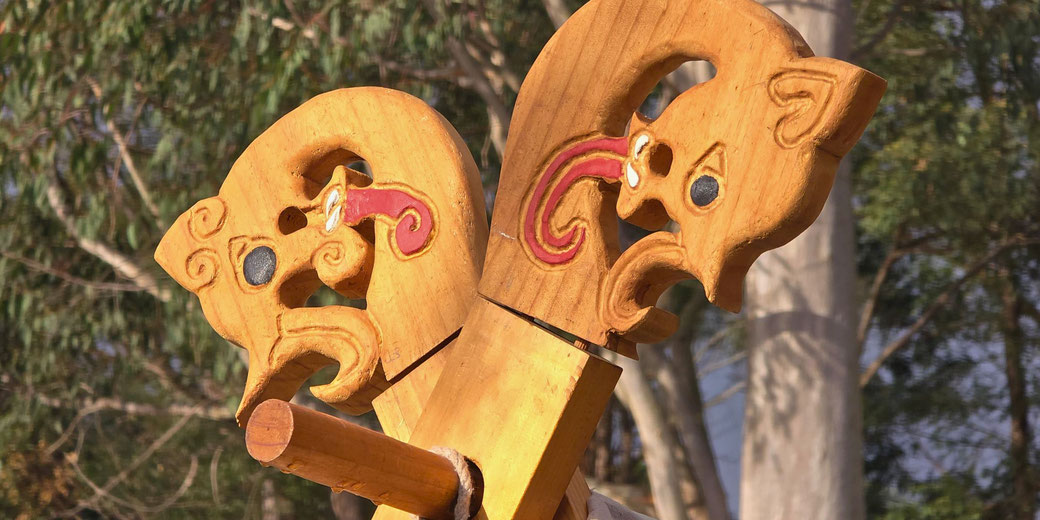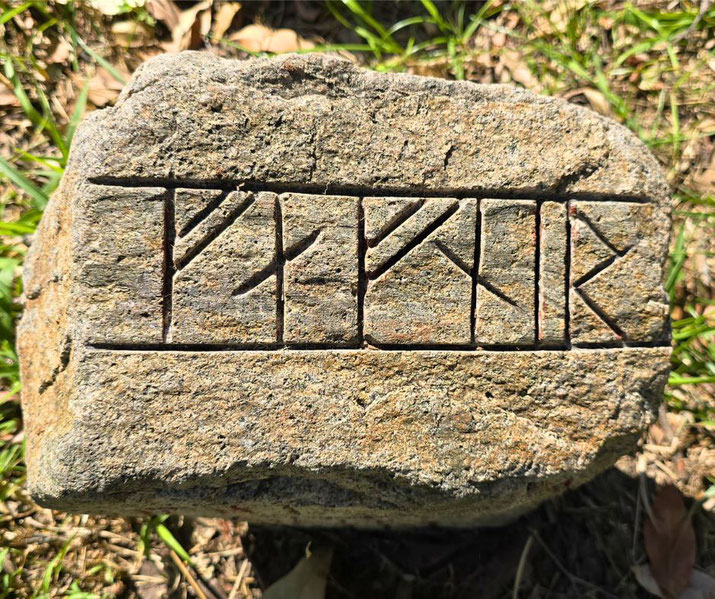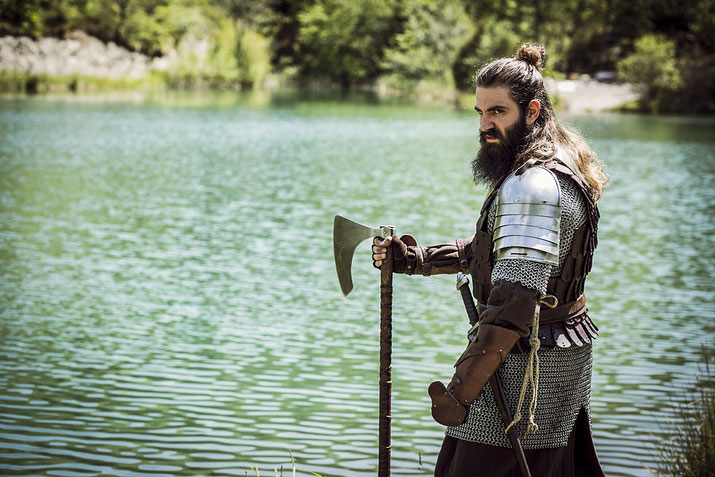The rise and fall of the Vikings

The Vikings were a group of people that originated from the Scandinavian region, where the modern countries of Norway, Denmark, and Sweden are currently located.
During the 8th to 11th centuries AD, the Vikings sailed across Europe, Africa, and even to North America, for trade, expansion, and military engagements.
This period of time is often referred to as the 'Viking Age', and it was typified by violent clashes between the Vikings and the people they encountered on their travels.
Who were the Vikings?
Even though we use the term 'Viking' to mean a specific group of people, this isn't really the most accurate use of the word.
A 'Viking' was actually a job and was similar to being a soldier. A person from any Scandinavian country that spent their time raiding other countries for wealth was a 'Viking'.
It is easy to think of 'Viking' as something you do, not something you are.
Therefore, anyone from one of the Scandinavian countries that didn't go out and raid were not, technically speaking, a 'Viking'.
People from these regions could also be farmers, merchants, metalworkers, or craftsmen.
Despite this, most people still talk about these people groups as 'Viking cultures', even though only the warriors were actually doing the 'Viking-ing'.

What was the 'Viking Age'?
The beginning of the Viking Age is usually assigned to the Viking attack on a religious monastery in northern England in AD 793.
On June 8 of that year, at the island of Lindisfarne, which was only inhabited by monks, the Vikings attacked suddenly and left with anything of value that they could find.
To Christian Europe, an attack on a holy site was shocking, and as a result, the Vikings gained a reputation for being greedy, bloodthirsty warriors with no sense of morality.
For the next three centuries, Norwegians, Swedes and Danes attacked any vulnerable community in a similar way.
Popular places for Viking attacks included the British Isles, France, Italy and even Russia.
In fact, by the late 9th century, a significant portion of England was under Viking control and was known as the Danelaw, as Norse law and customs were dominant in these regions.
In practice, Vikings preferred to attack locations close to the sea, as they were easy to reach.
They preferred to strike quickly, hopefully without any warning, steal as much movable wealth as possible, and escape in their ships before anyone could arrange a counterattack.

Why did Vikings begin raiding?
What is surprising to most people, is that the inhabitants of Norway, Denmark, and Sweden, had not raided like this ever before.
It seems to have been a new idea that took on quite quickly. Therefore, modern scholars are still trying to work out what motivated these cultures to begin raiding in the first place.
At the heart of this sudden need to travel may have been population growth in their home counties.
It is estimated that at the height of their expansion, the Viking population in Scandinavia numbered around 800,000 to 1,000,000 people.
But, there is no simple answer as to why their need to expand began, but here are some of the most popular theories:
- Climate change had caused a series of bad crops, and starvation forced the Vikings to look for new ways of making money
- There was a lack of land in Scandinavia and young men were encouraged to find new homes by invading other countries
- The Viking cultures began encountering rich people from other lands through trade and, when they learnt that churches were undefended and very wealthy, they took advantage of the situation for their own gain
Viking traders
As mentioned above, not all Vikings were raiders. Many were very successful traders.
In fact, Viking trade networks extended as far as the Byzantine Empire and the Abbasid Caliphate in the east, with Norse traders known as Varangians even serving as mercenaries in these distant lands.
As they travelled, some groups began to settle and develop new territories under Viking control.
For example, one Viking chieftain named Rurik founded the Kievan Rus state around AD 862, which would eventually evolve into modern Russia and Ukraine.
Also, the city of Dublin in Ireland was originally established as a Viking settlement in AD 841 and became a major center for trade in the British Isles.
Longships
At the time that the Vikings began raiding, they had developed a sophisticated kind of ship that was unique to their culture, called the 'longship'.
Most ocean-going ships had to sit deep in the water to avoid sinking in rough seas.
What was remarkable about Viking longships is that they were very shallow.
Theoretically, they should not be able to survive a long voyage over open seas.
However, Vikings had built them in a way that they could do so. Specifically, the innovation of the clinker-built longships, which were defined by their overlapping planks, allowed the Vikings to navigate both open seas and shallow rivers successfully.
Some longboats were even designed to hold up to 100 men: an ideal size for a raiding party.
The benefit of having shallow ships like this is that they could sail them right up to the beach and disembark very quickly.
In the same way, when a raid was finished, they could quickly get back into their ships and sail away.
In addition, these ships were also ideal for sailing up rivers, which meant that they could use river systems to raid deep inland and then sail back down the rivers to get away quickly.
Vikings in North America
With these clever longboats, the Vikings were even able to sail from Europe to North America safely.
The first person to achieve this was known as Leif Erikson, a Norse explorer. Historians believe that he was the first European to have set foot on North American soil, specifically in an area he named Vinland around the year AD 1000.
They managed this by settling at two key locations on the way: Iceland and Greenland.
The Vikings, led by Erik the Red, had established the settlement in Greenland earlier, in around AD 985, which lasted for several centuries despite the very harsh environmental conditions of the area.
However, the Vikings used these sites as resting places on the long journey.
As a result, the Vikings were the first Europeans to reach the Americas, five hundred years before Christopher Columbus.
End of the Viking Age
Most historians date the end of the Viking age to AD 1066. In this year, King Harald Hardrada, often called the last great Viking king, died in the Battle of Stamford Bridge in AD 1066.
Also, in the same year, another group of Vikings, called the Normans, who had settled in France, successfully invaded England.
These Normans had adopted French culture, language, and religion, but by 1066, they were not much like the traditional Vikings.
However, it was the Normans who invaded England and won the Battle of Hastings in 1066.
In fact, the process of adopting the cultures of the lands they settled in was what ultimately brought the Viking period to an end.
After a few generations, it was no longer obvious who the Vikings were in any given country, because they acted and spoke the same way as the locals.
The invaders had even adopted Christianity instead of their traditional gods.
Therefore, the Vikings essentially disappeared into the rest of European culture.
Further reading
What do you need help with?
Download ready-to-use digital learning resources
Copyright © History Skills 2014-2025.
Contact via email
With the exception of links to external sites, some historical sources and extracts from specific publications, all content on this website is copyrighted by History Skills. This content may not be copied, republished or redistributed without written permission from the website creator. Please use the Contact page to obtain relevant permission.





